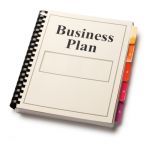
The INTRODUCTION portion of the business plan needs to be a summarized description of the company and its industry of participation. Include any industry standards and statistics that may enhance the appearance of the proposal. In the thesis of the paragraph, clearly state the total capital requirements requested of the reader.
In the COMPANY DESCRIPTION portion, provide the reader with an understanding of the current type of business filing(s), e.g. incorporated, limited liability company, sole proprietorship, etc. Also, include the mission statement and mandate. Outline the different media in which the business will operate, continuing into a sentence or two that illustrate the planned direction of the organization for the next few years. Close this section with the most current mailing address and contact information of the business and key figure heads.
Create a CORPORATE MANAGEMENT section, introducing the reader to the founders and other noteworthy participants in the business. Then, list the same individuals and their titles. From there, work into a detailed description of the persons listed above, explaining their involvement, experience, qualifications and supplementary information.
In the FACILITIES section, summarize the plan for any necessary office and warehouse space including the types of space (e.g. Class A, Class B, etc.) and rough locations. Next, breakdown all the needs and risks associated with the acquisition. This helps the reader understand that your organization has thought out the idea and understands all facets of the undertaking in a bulleted manner. Following the bulleted list, insert a detailed plan, breaking down the step-by-step tentative plan that you will put in place to procure the space needed.
In the PRIMARY PRODUCT/SERVICE section, introduce the reader to any product(s)/service(s) that are the focal point of the organization’s business model. Explain the idea behind the primary product/service and what makes it a value to the potential customers. Also, why is it better than products/services offered by the competition? Follow this introduction with individual breakdowns of each product/service if multiples exist.
In the MARKETING STRATEGIES section, describe the overall marking plan that the business intends to implement. Include any pertinent demographic research and industry disparities. Touch on the different segments and how you plan to approach them. Include a local, regional, national/international and web-based marketing plan. In these individual paragraphs, discuss the media to be used including changes that may arise from budget deficits.
Following the individual marketing plan paragraphs, separately discuss the different marketing and advertising efforts that are expected to take place within each facet of media. If a website is in the plan, this is where an outline of its development should be presented, including consumer imagery, functionality and search engine optimization (SEO).
In the FUTURE PLANNING section, take this opportunity to educate your reader on the direction your team plans to take the business. Make this section read like an internal document, similar to an employee handbook. Give a synopsis of future sales expectations, expansion of the marketing plan, and employee growth. This is where well thought-out ideas regarding streamlining production, promotion and distribution are presented (consider outsourcing, private labeling, licensing, trade marking and franchising).
The final section, FINANCIALS, is the most crucial to the success of your new business. Create this document to insure that the reader believes that you have done the appropriate research and financial planning to start and operate your business. Include all fixed and variable expenses; then complement these numbers with all expected revenue sources. After producing a written summary of these items, you will need to prepare the necessary expense reports including balance sheets, income statements, statements of cash flow and pro forma income statements. Please note that when making the appropriate estimates, offer a breakdown including both the monetary financials. Also, try to quantify certain pieces; this helps readers that may have been exposed to different schools of thought fully understand your documents.
Any copies of your business plan should be controlled and ensure that you keep a distribution record. This will allow you to update and maintain your business plan on an as-needed basis. Remember, too, that you should include a private placement disclaimer with your business plan if you plan to use it to raise capital.
For a more in-depth analysis of the facets of a business plan, please read our article titled, “Necessary Components of a Business Plan”.
We sincerely hope that this guide has offered you some clarity and guidance as you move forward toward the creation of your own business plan. As an additional tool, we offer a fully assembled business plan template. We wish you the very best of luck in your future business endeavors.






















